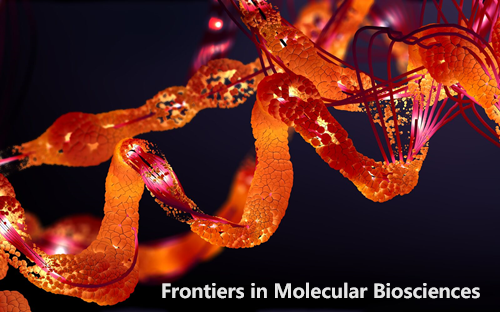Candidate proteins interacting with cytoskeleton in cells from the basal airway epithelium in vitro
IF 3.9
3区 生物学
Q2 BIOCHEMISTRY & MOLECULAR BIOLOGY
引用次数: 0
Abstract
Introduction: The cytoskeleton consists of actin, microtubules, septins, and intermediate filaments and, in most cells, is anchored to an extracellular matrix. Each cell has a unique arrangement of this network and readjusts it from time to time. To investigate the regulation of these reorganizations, we identified interactors from extracts of four cultured lines representing basal cells from the airway epithelium.Methods: After immunoprecipitation with an antibody against keratin 17, samples were processed by liquid chromatography and tandem mass spectrometry. Samples not undergoing antibody-mediated capture were processed in parallel.Results: The main keratins of basal cells, namely, Krt14 (type I) and Krt5 (type II), constituted 67% of the total keratin recovered. Several other intermediate filament proteins, nestin, lamin-B1, and prelamin A/C, were present but not enriched upon immunoprecipitation. Although the class of armadillo-repeat proteins was represented by beta-catenin1 and plakoglobin, other desmosome plaque constituents were absent. Large cytolinkers were represented by the spectraplakin, microtubule-actin cross-linking factor (Macf1), which was enriched by immunoprecipitation, and the plakin, plectin, which was not enriched. Subunits of actin filaments and microtubules, along with numerous proteins associated with them, were recovered in both immunoprecipitated samples and those lacking the capture step. Coefficients of determination were computed based on abundance. The actin-associated proteins, alpha-spectrin and brain-specific angiogenesis inhibitor (Baiaip2l), were modestly correlated with keratin abundance but highly correlated with one another and with the keratin-binding protein, annexin A2. This interaction network resembled the pedestal formed by pathogenic与体外基底气道上皮细胞的细胞骨架相互作用的候选蛋白质
引言细胞骨架由肌动蛋白、微管、隔蛋白和中间丝组成,在大多数细胞中,细胞骨架被固定在细胞外基质上。每个细胞都有自己独特的网络排列,并不时进行重新调整。为了研究这些重组的调控,我们从代表气道上皮基底细胞的四个培养系的提取物中鉴定了相互作用因子:方法:用角蛋白 17 抗体进行免疫沉淀后,用液相色谱法和串联质谱法处理样品。未进行抗体介导捕获的样本也同时进行了处理:结果:基底细胞的主要角蛋白,即 Krt14(I 型)和 Krt5(II 型),占回收角蛋白总量的 67%。其他几种中间丝蛋白、巢蛋白、层粘连蛋白-B1和前粘连蛋白-A/C也存在,但在免疫沉淀中未被富集。虽然β-catenin1和plakoglobin代表了犰狳重复蛋白类,但其他脱丝体斑块成分并不存在。通过免疫沉淀富集的光谱plakin、微管-肌动蛋白交联因子(Macf1)以及未富集的plakin、plectin代表了大型细胞连接蛋白。肌动蛋白丝和微管的亚基以及与之相关的许多蛋白质在免疫沉淀样品和缺乏捕获步骤的样品中都得到了回收。根据丰度计算了测定系数。肌动蛋白相关蛋白、α-pectrin 和脑特异性血管生成抑制因子(Baiaip2l)与角蛋白丰度的相关性不大,但彼此间以及与角蛋白结合蛋白附件蛋白 A2 的相关性很高。这种相互作用网络类似于致病性大肠杆菌形成的基座。免疫沉淀富集了微管相关蛋白、dynamin 1-like 蛋白和细胞质动力蛋白 1 重链(Dync1h1),表明它们与角蛋白有关联,而驱动蛋白 1 重链和微管相关蛋白视网膜色素变性 1(EB1)则没有富集。Dync1h1 的丰度与所有 septins 的丰度呈负相关,这表明与微管上已知的拮抗 septin-dynein 1 关系相似:在与细胞骨架相互作用的候选蛋白方面,细胞系表现出明显的一致性。alpha-spectrin-Baiap2l网络可能将肌动蛋白丝与角蛋白前体颗粒连接起来。以Dync1h1为中心的一个较小的相互作用网络与所有spectrin-Baiap2l成分呈负相关,这表明它及其结合伙伴被排除在基座样结构域之外。
本文章由计算机程序翻译,如有差异,请以英文原文为准。
求助全文
约1分钟内获得全文
求助全文
来源期刊

Frontiers in Molecular Biosciences
Biochemistry, Genetics and Molecular Biology-Biochemistry
CiteScore
7.20
自引率
4.00%
发文量
1361
审稿时长
14 weeks
期刊介绍:
Much of contemporary investigation in the life sciences is devoted to the molecular-scale understanding of the relationships between genes and the environment — in particular, dynamic alterations in the levels, modifications, and interactions of cellular effectors, including proteins. Frontiers in Molecular Biosciences offers an international publication platform for basic as well as applied research; we encourage contributions spanning both established and emerging areas of biology. To this end, the journal draws from empirical disciplines such as structural biology, enzymology, biochemistry, and biophysics, capitalizing as well on the technological advancements that have enabled metabolomics and proteomics measurements in massively parallel throughput, and the development of robust and innovative computational biology strategies. We also recognize influences from medicine and technology, welcoming studies in molecular genetics, molecular diagnostics and therapeutics, and nanotechnology.
Our ultimate objective is the comprehensive illustration of the molecular mechanisms regulating proteins, nucleic acids, carbohydrates, lipids, and small metabolites in organisms across all branches of life.
In addition to interesting new findings, techniques, and applications, Frontiers in Molecular Biosciences will consider new testable hypotheses to inspire different perspectives and stimulate scientific dialogue. The integration of in silico, in vitro, and in vivo approaches will benefit endeavors across all domains of the life sciences.
 求助内容:
求助内容: 应助结果提醒方式:
应助结果提醒方式:


